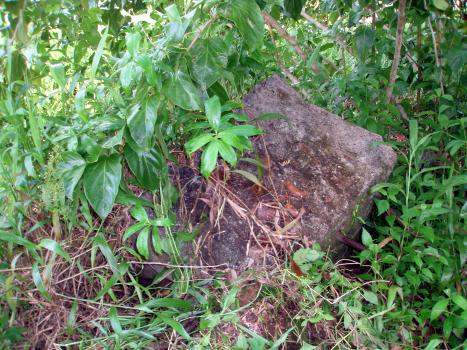
When the FSM China Friendship center was built an MOU mandated post-build clean-up. Unfortunately the MOU did not specify to where the cleaned-up remainders would go, and a good bit was tossed up onto the hill behind the gym into the Haruki cemetery.
Every time I cut tall grass in a new area I find another remnant of the build. Some of the larger remnants remain covered by tall grass and weeds. The most common remnant is rebar which was driven deep into the ground either to mark a sight line or help anchor some other piece of equipment. Also on the hill are the remains of crane build from pipes, a large cement anchor block, and large frames used in conjunction with the crane. The rebar can be particularly treacherous. If one falls over into the tall grass while cutting, one stands a risk of being speared by a piece of hidden rebar.
A large cement block sits next to one of the graves in the cemetery.

The block is associated with a length of pipe from a crane.
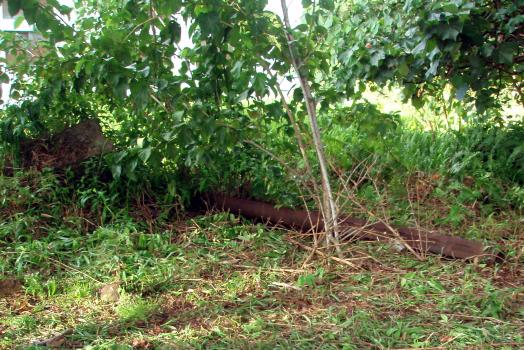
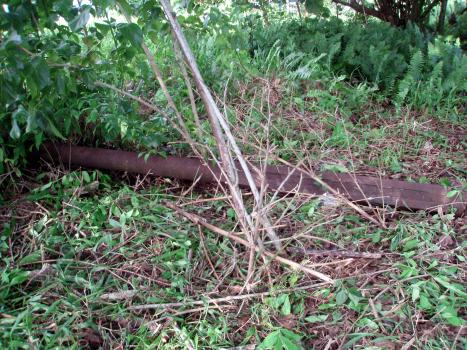
The large frame for the crane is hidden under tall grass to the southwest of the cemetery
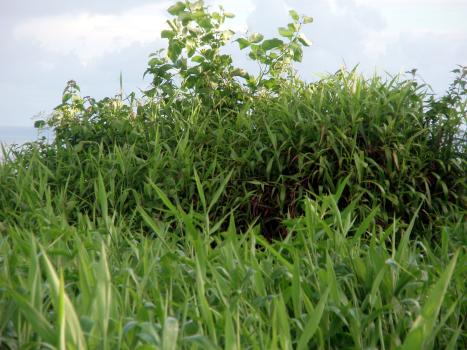
Another piece of the pipe lays just to the west of the one by the cement block.
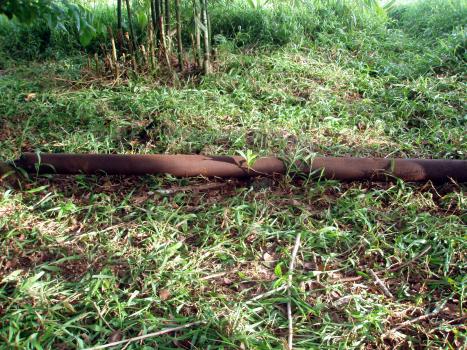
Long iron rods extend from the ground in places. Attempts to remove this one near the Acacia tree have failed.
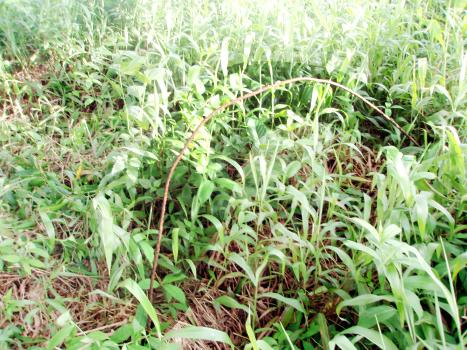
Another rod was found when planting the plumeria. Just under the surface is a collection of cement, bricks, and stones that were associated with the base of the crane. Attempts to remove this rod failed - the rod is attached just below ground level.

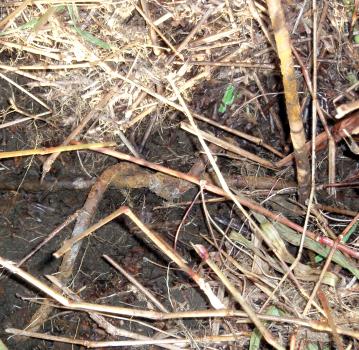
Scattered around the cemetery are short segments of rebar protruding from the ground. Removal has thus far eluded me. Here three typical rebar segments are highlighted.
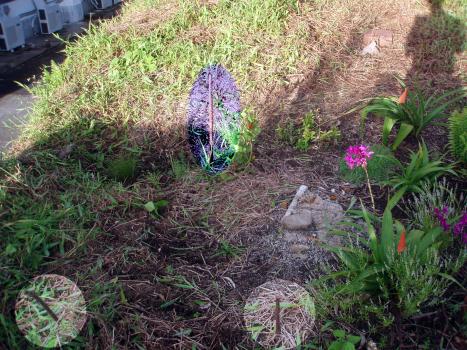
The orchids are planted atop pieces of orange steel tubing. The area was disturbed by the construction. Returning the area to its original land form is no longer possible, among other massive new features is the clay from the foundation to the west of what remains of the cemetery. So I have opted to make no attempt to "restore" the terrain, only to conserve what is presently in place. Hence buried pipes that have proven difficult to remove have simply been left in place.
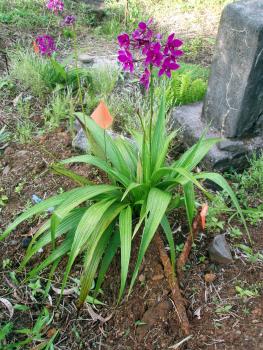
Pipes and steel frames that can be removed from the ground without extensive digging are collected here by the Acacia.
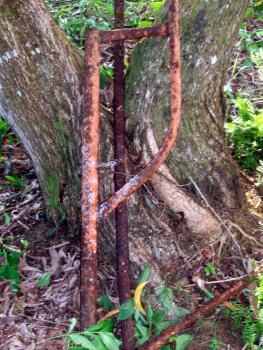
On the 25th of May I was cleaning near the Alpinia carolinensis when I hit a pipe hidden in the grass.
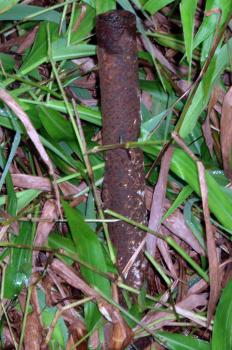
The builders often used local rocks to help anchor lights on the hill. Stones that were possibly once part of a grave may have been utilized and moved.
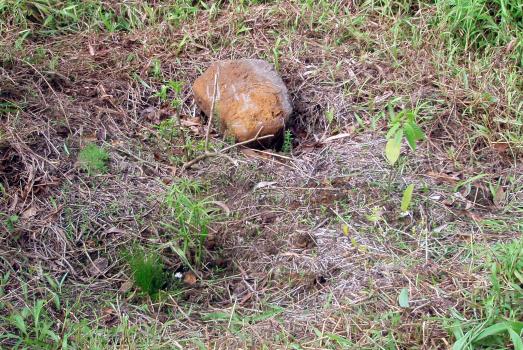
Shark stories • Ethnobotany • Pohnpei • Kosrae • Work • COMFSM